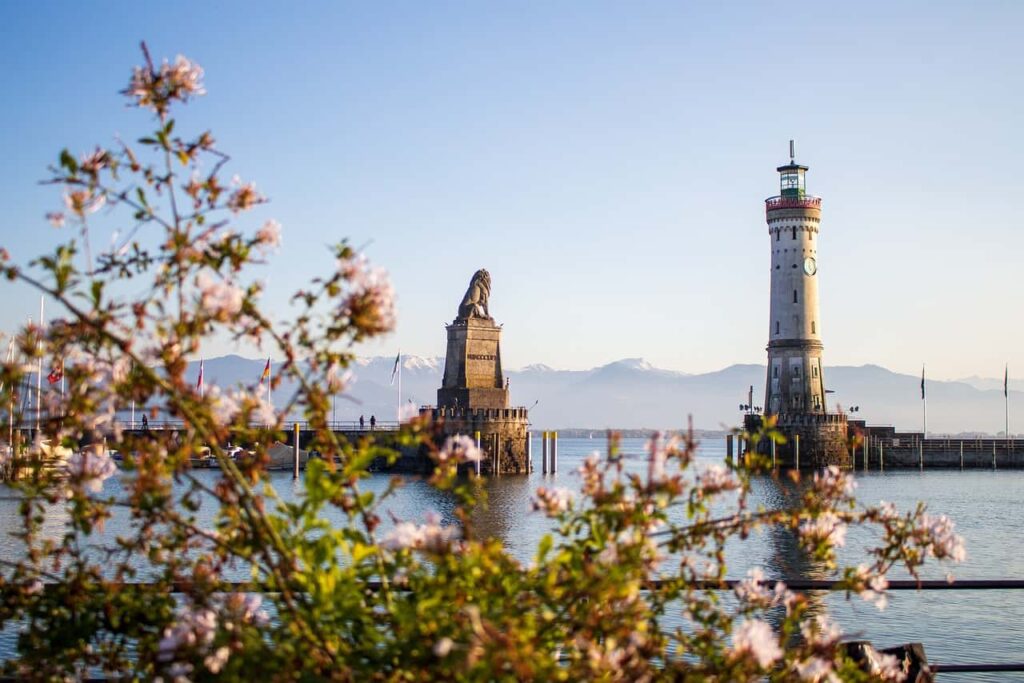Lighthouse Symbolism: 7 Top Meanings
I have always loved lighthouses. First of all, there are all those lighthouses in the flight levels of Spyro the Dragon (my favorite video game). And there is something romantic about those towering beacons of light. They’re not just navigational aids for mariners but powerful symbols in literature, art, and culture. Their solitary presence and guiding light have inspired countless metaphors and stories, making them emblems of hope, guidance, and safety.
But there’s more to lighthouse symbolism than meets the eye. These structures, perched at the edge of two worlds — land and sea — also represent solitude, vigilance, and the eternal battle between humans and nature.
Here are the different symbolic meanings associated with lighthouses:
1. Hope
In the vast expanse of literature and art, lighthouses have long stood as unwavering symbols of hope. Amidst a storm’s fury or the encompassing darkness of night, the solitary beam of a lighthouse serves as a comforting reminder that safety and shelter are within reach. This powerful imagery resonates deeply with human experiences, embodying the light at the end of the tunnel during challenging times.
Lighthouses guide ships to safety, much like hope guides us through the turbulent seas of life. They shine brightly, piercing through the thickest fogs and darkest nights, providing a beacon for those who feel lost or in despair. It’s this unwavering, guiding light that has made lighthouses a universal symbol of hope and resilience.
In moments of uncertainty or danger, the sight of a lighthouse can instill a sense of calm and reassurance. It’s a tangible representation that hardships are temporary and that with perseverance, one can navigate through life’s storms. By drawing on the symbolism of lighthouses, you’re reminded that no matter how dire the situation, there is always a guiding light leading you toward a safer shore.

2. Faith
When exploring the deep symbolism of lighthouses, it’s impossible to overlook their connection to faith. For many, these towering beacons are not just symbols of hope and guidance but also resonate deeply with the Christian faith in God. In a spiritual context, lighthouses can be seen as representations of God’s light guiding you through the darkest times of your life, much like a lighthouse guides ships through stormy seas to safe harbor.
This symbolism is powerful, offering comfort and reassurance that there’s a higher power watching over you, leading you through life’s turbulent waters.
The solitary figure of the lighthouse keeper, diligently keeping the light on, parallels the Christian belief in the vigilant watch of a benevolent God. This imagery reinforces the idea that divine watchfulness is constant, ensuring the light never dims, much like the faithful commitment of lighthouse keepers ensuring the lamp burns bright no matter the conditions.
3. Loneliness
Lighthouses stand as solitary figures against vast, tumultuous landscapes. Their isolation is not mere physical detachment but serves a deeper metaphorical purpose. In literature and art, loneliness represents the dual nature of the human condition— a testament to resilience and a call for companionship.
When you consider the life of a lighthouse keeper, images of a singular individual maintaining the beacon’s light through the night come to mind. This portrayal underscores a profound sense of solitude. Lighthouse keepers are often depicted as heroes battling the elements alone, a narrative that resonates with anyone who has faced personal challenges in isolation.
This solitude isn’t just about physical separation from society. It also symbolizes the emotional and spiritual solitude that people experience during life’s storms. The lighthouse, standing alone on the shoreline or atop a rocky cliff, becomes a powerful symbol of the human journey through periods of darkness and uncertainty.

In the realm of the Christian faith, the lighthouse’s solitary nature can also reflect the individual’s relationship with God. Just as a lighthouse stands steadfast, reaching out into the darkness, so too does faith offer a guiding light. This solitary beacon reminds believers that even in the loneliest moments, guidance and hope are always within sight, illuminating the path forward.
4. Strength and Resilience
Lighthouses stand as enduring symbols of strength and resilience, their structures weathering the harshest conditions nature throws their way. From violent storms to relentless seas, these stoic beacons have withstood the test of time, mirroring the human spirit in the face of adversity. Their steadfast presence reminds you that no matter the challenge, with determination and resilience, you can endure and emerge stronger.
Lighthouses are built to withstand the most extreme weather conditions, their foundations rooted deep into the earth and their materials chosen for durability. This architectural resilience is not just practical; it symbolizes the human capacity to stand firm when faced with life’s storms. It’s a powerful message that resonates on a personal level – reminding you that standing your ground, even when the odds seem insurmountable, is possible.
In the context of the Christian faith, this resilience takes on a deeper meaning. Just as the lighthouse stands firm amidst the storm, faith in God provides an unshakeable foundation in life’s tumultuous moments. It underscores the belief that with faith, you’re never truly alone or without guidance. The strength and resilience of lighthouses echo the Christian journey – one of enduring faith through life’s trials, always with the light of God to guide the way.
5. Enlightenment and Clarity
In the vast expanse of history and culture, lighthouses have been more than architectural marvels; they’ve been beacons of enlightenment and clarity. Just like the piercing light that cuts through the darkest night, they symbolize the quest for understanding and knowledge amid confusion and unknowingness. It’s this pursuit of light—of enlightenment—that has closely mirrored humanity’s journey towards clarity and insight.
Lighthouses serve as a metaphor for the moments we seek clarity in our lives. They remind us that enlightenment is within reach, that the quest for knowledge and understanding is not just a journey, but a guiding light towards a clearer path. In the relentless tides of life’s uncertainties, the symbolic light of the lighthouse provides a point of reference, a fixed point of clarity that helps chart the course forward.

This symbolism isn’t just found in the physical realm but extends to the spiritual as well. In the context of Christian faith, lighthouses symbolize the light of God in guiding believers on their path. Just as a lighthouse illuminates the way for ships caught in a stormy sea, so does faith in God offer clarity and direction in the tumultuous journey of life.
The symbolism of guiding light isn’t only about Christianity, though. You can call it the light of God, the Universe, guardian angels, or whatever resonates with you. The guiding light of the lighthouse is a reminder that even when we’re surrounded by the shadows of doubt and confusion, there’s always a source of light and enlightenment to guide us through.
6. Maritime Heritage
Lighthouses stand as towering monuments of maritime heritage. For centuries, they’ve been crucial in ensuring the safety of mariners, guiding ships away from perilous shores and through treacherous waters. Their presence along coastlines and on isolated islands symbolizes the human endeavor to conquer and navigate the world’s vast oceans.
Beyond their practical role, lighthouses evoke a sense of nostalgia and a connection to the past, reminding us of the time when the sea was the primary pathway for exploration, trade, and communication.
These structures have witnessed the evolution of maritime travel, from sail to steam to the sophisticated naval technologies of today.
Each lighthouse has its own story, often intertwined with historical events and the development of the surrounding communities. They serve as custodians of local lore and legends, often harboring tales of heroism and tragedy. Their resilience against the elements and the passage of time makes them enduring symbols of human achievement and persistence.

7. Safety and Protection
Lighthouses are synonymous with the themes of safety and protection, serving as steadfast guardians of the coast. These structures, often perched on hazardous shores, provide a guiding light that navigates mariners away from danger, ensuring their safe passage through treacherous waters.
It’s not just about the physical aspect of safety; lighthouses also offer psychological reassurance. Knowing that a lighthouse stands guard, slicing through the darkness with its beacon, brings comfort to those on the water and ashore. This sense of protection extends beyond the tangible, echoing the unwavering presence of a watchful entity.
Lighthouses symbolize the comforting idea that regardless of the storms one might face, there is always a guiding light leading back to safety.
Conclusion
Lighthouses stand as timeless symbols, weaving together themes of hope, guidance, and resilience that resonate deeply with the human spirit. They’re more than just architectural marvels; they’re beacons that light our way through life’s darkest moments, reminding us that we’re never truly alone.
Whether you’re navigating the stormy seas of life or seeking a beacon of inspiration, lighthouses offer a powerful metaphor for finding your way. Their enduring presence reassures us that with faith, vigilance, and steadfast resolve, we can weather any storm and emerge stronger on the other side.
Let the symbolism of lighthouses guide you, illuminating your path with their unwavering light and inspiring you to keep moving towards safer shores.
Read Next:
Share the love!
